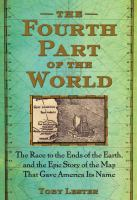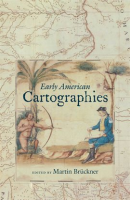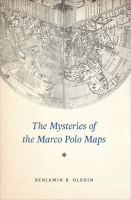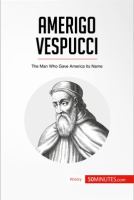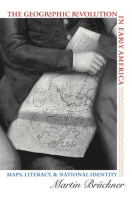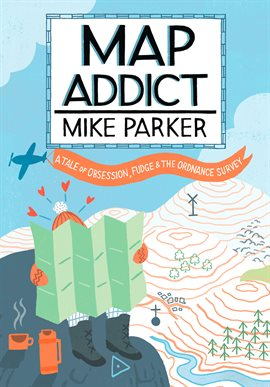================================= General Maps
The Look of Maps: An Examination of Cartographic Design (Esri Press Classics) 1st Edition
Arthur H. Robinson
Originally published in 1952, The Look of Maps documents Arthur H.
Robinson’s pivotal observation that the discipline of cartography rests
at the crossroads of science and art. Based on his doctoral research,
this book attempts to resolve the apparent disconnect by covering a
range of topics related to the visual characteristics of cartographic
technique, including: lettering, structure, and color. Robinson offers
advice that even the modern cartographer will find relevant: adopt a
“healthy questioning attitude” in order to improve and refine the
graphic techniques used to present information visually through maps.
The Look of Maps is a classic text and an essential component to any
cartographic library.
Designing Better Maps: A Guide for GIS Users 2nd Edition
Cynthia Brewer
Designing Better Maps: A Guide for GIS Users, second edition, is a
comprehensive guide to creating maps that communicate effectively. In
Designing Better Maps, renowned cartographer Cynthia A. Brewer guides
readers through the basics of good cartography, including layout design,
scales, projections, color selection, font choices, and symbol
placement. Designing Better Maps also describes the author’s ColorBrewer
application, an online color selection tool. The second edition includes
a new chapter on map publishing.
Mapping: A Critical Introduction to Cartography and GIS 1st Edition
Jeremy W. Crampton
Mapping: A Critical Introduction to Cartography and GIS is an
introduction to the critical issues surrounding mapping and Geographic
Information Systems (GIS) across a wide range of disciplines for the
non-specialist reader.
- Examines the key influences Geographic Information Systems (GIS) and
cartography have on the study of geography and other related
disciplines
- Represents the first in-depth summary of the “new cartography” that
has appeared since the early 1990s
- Provides an explanation of what this new critical cartography is, why
it is important, and how it is relevant to a broad, interdisciplinary
set of readers
- Presents theoretical discussion supplemented with real-world case
studies
- Brings together both a technical understanding of GIS and mapping as
well as sensitivity to the importance of theory
The Power of Maps Revised Edition
Denis Wood
This volume ventures into terrain where even the most sophisticated map
fails to lead–through the mapmaker’s bias. Denis Wood shows how maps
are not impartial reference objects, but rather instruments of
communication, persuasion, and power. Like paintings, they express a
point of view. By connecting us to a reality that could not exist in the
absence of maps–a world of property lines and voting rights, taxation
districts and enterprise zones–they embody and project the interests of
their creators. Sampling the scope of maps available today,
illustrations include Peter Gould’s AIDS map, Tom Van Sant’s map of the
earth, U.S. Geological Survey maps, and a child’s drawing of the world.
THE POWER OF MAPS was published in conjunction with an exhibition at the
Cooper Hewitt Museum, the Smithsonian Institution’s National Museum of
Design.
Rethinking the Power of Maps 1st Edition
Denis Wood
A contemporary follow-up to the groundbreaking Power of Maps, this book
takes a fresh look at what maps do, whose interests they serve, and how
they can be used in surprising, creative, and radical ways. Denis Wood
describes how cartography facilitated the rise of the modern state and
how maps continue to embody and project the interests of their creators.
He demystifies the hidden assumptions of mapmaking and explores the
promises and limitations of diverse counter-mapping practices today.
Thought-provoking illustrations include U.S. Geological Survey maps;
electoral and transportation maps; and numerous examples of critical
cartography, participatory GIS, and map art.
================================= QGIS and Python
QGIS Python Programming Cookbook
Joel Lawhead
https://www.packtpub.com/application-development/qgis-python-programming-cookbook/?utm_source=ACgislounge&utm_medium=referral&utm_campaign=1783984988
QGIS Python Programming will teach you how to write Python code that
works with spatial data to automate geoprocessing tasks in QGIS. It will
cover topics such as querying and editing vector data and using raster
data. You will also learn to create, edit, and optimize a vector layer
for faster queries, reproject a vector layer, reduce the number of
vertices in a vector layer without losing critical data, and convert a
raster to a vector. Following this, you will come across recipes that
will help you to compose static maps, create heavily customized maps,
and add specialized labels and annotations. Apart from this, the book
will also share a few tips and tricks based on different aspects of this
powerful tool.
The PyQGIS Programmer’s Guide
Extending QGIS with Python
by Gary Sherman
http://locatepress.com/ppg
Welcome to the world of PyQGIS, the blending of Quantum GIS and Python to
extend and enhance your open source GIS toolbox. With PyQGIS you can write
scripts and plugins to implement new features and perform automated tasks.
This book will guide you in getting started with PyQGIS. After a brief
introduction to Python, you’ll learn how to understand the QGIS Application
Programmer Interface (API), write scripts, and build a plugin.
This book is designed to allow you to work through the examples as you go
along. At the end of each chapter you will find a set of exercises you can do
to enhance your learning experience.
The PyQGIS Programmer’s Guide is compatible with the version 2.0 API released
with QGIS 2.0.
The Genius of Birds
Author: Jennifer Ackerman; John Burgoyne, (Illustrator)
Publisher: New York : Penguin Books, 2017. ©2016
ISBN: 9781101980842 1101980842
OCLC Number: 1223042166
Disenchanted Night: The Industrialization of Light in the Nineteenth Century
Wolfgang Schivelbusch
Published by University of California Press, 1995
ISBN 10: 0520203542ISBN 13: 9780520203549
The Look of Maps: An Examination of Cartographic Design
Robinson, Arthur Howard
ISBN 9781589482623 (pbk. : alk. paper)
LC classification GA105 .R63 2010
The Mapmakers
Wilford, John Noble
ISBN 0394753038
LC classification GA105.3 .W493 1982
The geography behind history
W. Gordon East.
LC classification G141 .E2 1965
Flattening the Earth: Two Thousand Years of Map Projections
P. Snyder
Paperback, 384 pages
Published December 5th 1997 by University of Chicago Press (first published August 1st 1993)
ISBN 0226767477 (ISBN13: 9780226767475)
As long as there have been maps, cartographers have grappled with the impossibility of portraying the earth in two dimensions. To solve this problem mapmakers have created hundreds of map projections, mathematical methods for drawing the round earth on a flat surface. Yet of the hundreds of existing projections, and the infinite number that are theoretically possible, none is perfectly accurate.
Longitude : the true story of a lone genius who solved the greatest scientific problem of his time
by Sobel, Dava
Publication Date 1995
Call Number 526.62 SOB
ISBN 9780802713124 9780140258790
Adjustment Computations: Spatial Data Analysis, Fourth Edition
C. D. Ghilani and P. R. Wolf
© 2006 John Wiley & Sons, Inc.
ISBN: 978-0-471-69728-2
Mobility Data Management and Exploration
Authors: Pelekis, Nikos, Theodoridis, Yannis
ISBN 978-1-4939-0392-4
Integrates mobility data handling processes to meet real-world application requirements
https://www.springer.com/gp/book/97814939039
I think the GWU library has the first two:
all are from: https://www.google.com/search?hl=en&q=inauthor:%22Mark+Monmonier%22&tbm=bks
which was from: https://michaelminn.net/tutorials/gis-projections/index.html
=============================================
Air Apparent
How Meteorologists Learned to Map, Predict, and Dramatize Weather
By Mark Monmonier · 2019
ISBN: 9780226222875, 022622287X
Page count: 324
Published: January 18, 2019
Format: ebook
Publisher: University of Chicago Press
Language: English
Author: Mark Monmonier
=============================================
Drawing the Line
Tales of Maps and Cartocontroversy
By Mark S. Monmonier · 1995
ISBN: 9780805025811, 0805025812
Page count: 368
Published: 1995
Format: Hardcover
Publisher: H. Holt
Language: English
Author: Mark S. Monmonier
This book is an extension of Monmonier’s earlier book, How to lie with maps. As
powerful tools of persuasion in science and public affairs, maps have had a
remarkable effect on our view of the world, our health, and the impact of our
votes.
=============================================
Rhumb Lines and Map Wars
A Social History of the Mercator Projection
ISBN: 9780226534329, 0226534324
Published: November 15, 2010
Publisher: University of Chicago Press
Author: Mark Monmonier
https://www.google.com/books/edition/Rhumb_Lines_and_Map_Wars/nvwu4Ba_Qp0C?kptab=overview&gbpv=0#ba_cen=lat_e7:%20389451658%0Alng_e7:%203524345268%0A&ba_loc=20008
https://www.google.com/books/edition/Rhumb_Lines_and_Map_Wars/nvwu4Ba_Qp0C?hl=en&gbpv=0
=============================================
From Squaw Tit to Whorehouse Meadow
How Maps Name, Claim, and Inflame
By Mark Monmonier · 2008
ISBN: 9780226534640, 0226534642
Page count: 230
Published: September 15, 2008
Format: ebook
Publisher: University of Chicago Press
Language: English
Author: Mark Monmonier
https://www.google.com/books/edition/From_Squaw_Tit_to_Whorehouse_Meadow/8DyZWTwkfF0C?hl=en&gbpv=0
================================
Adventures in Academic Cartography
A Memoir
By Mark Monmonier · 2016
ISBN: 9781523254316, 1523254319
Page count: 320
Published: January 27, 2016
Format: Paperback
Publisher: CreateSpace Independent Publishing Platform
Language: English
Author: Mark Monmonier
===============================================
Connections and Content
Reflections on Networks and the History of Cartography
By Mark S. Monmonier · 2019
ISBN: 9781589485594, 1589485599
Page count: 275
Published: 2019
Format: Paperback
Publisher: Esri Press
Language: English
Author: Mark S. Monmonier
